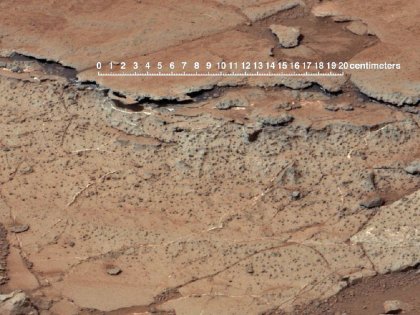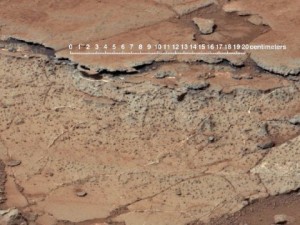July 28, 2014 – The images Curiosity is sending back from Gale Crater is showing soil profiles similar to those found in the dry valleys of Antarctica and in the alto-Plano of the Atacama Desert in Northern Chile. The images seen resemble the paleosoils, that is ancient soils, found in these Earth locations. They once more reinforce the consensus of a much warmer, wetter Mars some 3.7 billion years ago.
The soil images and data indicate chemical weathering and accumulations of clay just as one would find them here on Earth. Phosphorus depletion, associated with microbial activity here on Earth, is evident from the information Curiosity has gathered.
The date of these newly discovered soil deposits closely coincides with the emergence of life here on Earth. Our first evidence can be found in Earth fossil records dating 200 million years later than the age of these Martian soil deposits, but scientists are convinced that the only reason we cannot see evidence further back on our planet is because plate tectonics destroyed it. Mars has no active continental plates so the evidence there has remained preserved.
The research, authored by Gregory Retallack, a University of Oregon geologist was published in the last week in the journal, Geology.













